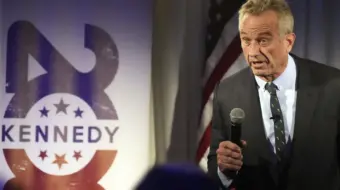Two recent articles downplaying the dangers to physical and mental health stemming from the World Trade Center disaster are being widely publicized in the mass media and “scientific” journals.
In the first, Dr. Paul Lioy, a chemist from Rutgers University, claims that the dusts and soot coming from the collapse of the WTC are far less dangerous than previously feared because the particles from the WTC were too large to create a problem. Lioy’s paper will be published by the American Chemical Society, a group not known for a pro-people, pro-worker bias.
Lioy’s report flies in the face of most findings that the asbestos, silica and other dusts were unusually small because of the crushing effect of the towers’ collapse. It only stands to reason that the smaller the size, the greater the possibility of reaching deeper in the lungs and airways.
The Environmental Protection Agency also got into the “less danger than previously thought” act with a report stating that the dangers presented to the environment and workplace are not as great as once feared.
Here again, the report seemed to have a self-serving effect. Ever since the events Sept. 11, 2001, the EPA has tried to downplay any acute or long-term health effects resulting from the attack on the center and that, if there were, they affected very few people, be they community residents or those who worked in the clean up. However, both reports reluctantly admit rescue and relief workers who were in and around the WTC immediately following the collapse could have lasting health problems.
Meanwhile, residents of the neighborhood and cleanup workers are demanding maximum protections. Residents who live in and around the WTC have won their demand that the EPA clean up their apartments. In addition, labor unions are demanding that the EPA clean up commercial sites so that workers who are working in and around the WTC are protected.
And, finally, responding to massive labor and community demands, the federal government and the New York City Health Department have announced a $20 million program to establish a registry to follow up on the 200,000 residents and workers who were exposed to WTC dangers.
The problem with this registry is that it will only establish a list of exposed people since no medical follow up was provided for. The Bush administration vetoed the $90 million requested by Sen. Hillary Clinton (D-N.Y.) and approved by both Senate and House last year to provide support for diagnostic care to those affected. However, neither the original $12 million given Mt. Sinai Hospital to screen victims or Sen. Clinton’s $90 million would cover the cost of any treatment for disabilities suffered by workers or community residents
There is still time for Congress to force the Bush administration to appropriate all necessary monies to protect WTC residents and workers. This is the other side of the anti-war message that the movement must make as part of its demands.
The author can be reached at pww@pww.org












Comments